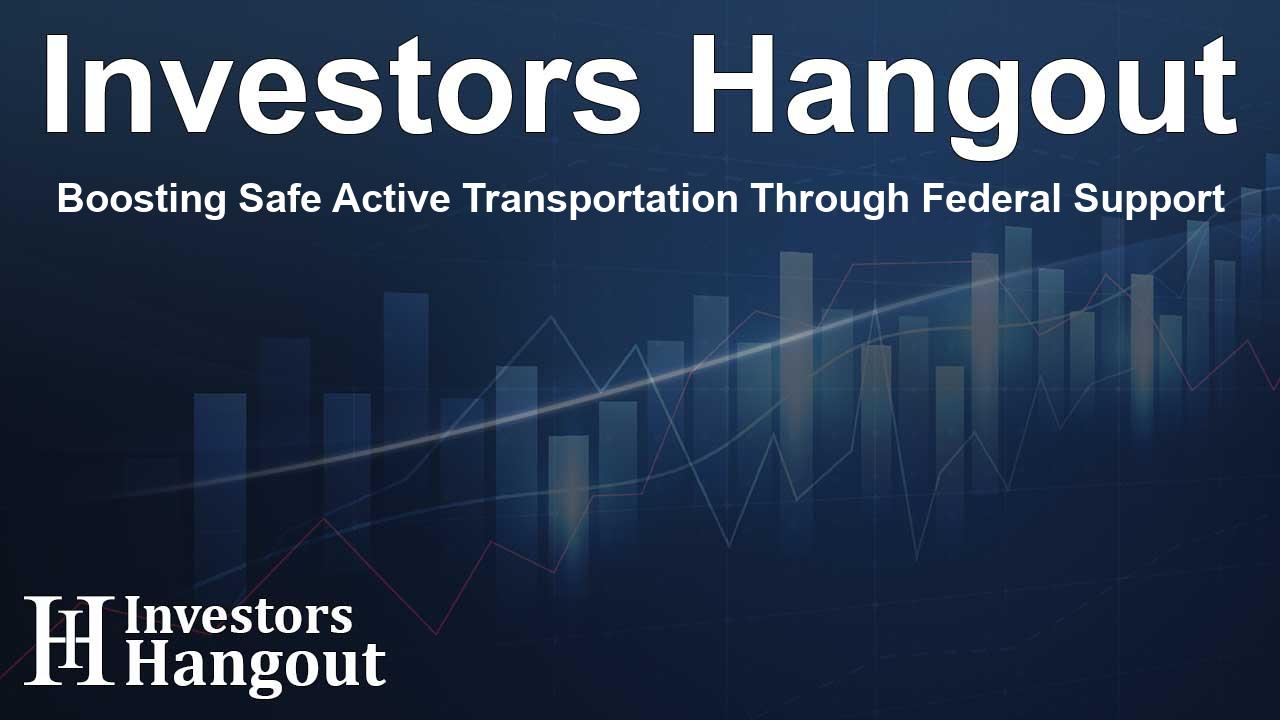Boosting Safe Active Transportation Through Federal Support

Federal Support for Active Transportation Initiatives
Recent announcements from the U.S. Department of Transportation (USDOT) underscore the ever-increasing demand for safe, connected bike and walking routes. This push represents more than just transportation; it embodies a commitment to healthier communities and an overall improvement in the quality of life.
The Impact of Trail Investments
Advocacy groups, like Rails to Trails Conservancy, emphasize the significant benefits these multimodal programs bring to Americans. Continuous federal support and funding are crucial for completing the extensive network of trails and active transportation options that our country needs. The promise of a well-connected trail system isn’t just visionary; it’s already yielding tangible economic benefits.
Economic Potential of Active Transportation
According to discussions surrounding the potential outcomes of the recent grants, the trail system creates over $34 billion annually in economic activity. By further investing in these infrastructures, this number could dramatically increase, creating jobs and fostering local economies across the nation.
Transformative Funding Initiatives
Under the RAISE (Rebuilding American Infrastructure with Sustainability and Equity) and the Reconnecting Communities Programs, the USDOT has allocated $9.5 billion over the past four years. This substantial investment highlights both the overwhelming demand and the potential for trails and active transportation projects to cultivate better connectivity in urban, suburban, and rural settings.
Recent Grants and Their Focus
The most recent funding round awarded $1.3 billion to RAISE initiatives, complementing another $544.6 million for Reconnecting Communities Programs. This funding aims to address the varying needs of non-motorized transportation users, with three-quarters of the awarded projects focusing on improvements for pedestrians and cyclists.
Highlights of Successful Projects
Various projects across the nation are set to benefit from these federal funds. A notable example includes funding for trail development in West Virginia, which will enhance connectivity between residential areas and transit points. Similarly, Nebraska is planning an expansion of the Cowboy Trail, which aims to promote safer travel and increase trail tourism.
Investments Driving Community Revitalization
Additional grants have been directed towards revitalizing communities, particularly through projects aimed at repurposing underutilized infrastructures. One such initiative involves a planning study in Pennsylvania designed to improve access along the Richmond Industrial Track, emphasizing the importance of safe biking and walking environments in urban regeneration.
Advocating for Continued Support
The USDOT's efforts reflect a broader recognition of the critical role that active transportation plays in creating healthier communities. Kevin Mills from Rails to Trails Conservancy expresses the sentiment that improving access to safe walking and biking routes is essential for fostering vibrant and sustainable living environments. The evident demand for funding indicates a strong public interest in active transportation initiatives.
Future Prospects for Active Transportation Funding
Moving forward, it is vital to secure reliable and sufficient funding sources to make these projects a reality. Programs, like the new Active Transportation Infrastructure Investment Program, have the potential to transform American towns and cities by providing consistent funding that matches the ambitious goals set for active transportation networks nationwide.
Conclusion
Rails to Trails Conservancy is dedicated to ensuring that the U.S. becomes a nation connected by vibrant trails and safe pathways. With the momentum generated by these recent grants and increasing public interest, there remains significant opportunity for growth within the active transportation sector.
Frequently Asked Questions
What are the recent funding initiatives by USDOT?
The USDOT recently announced a total of $1.3 billion in RAISE grants and $544.6 million in Reconnecting Communities grants targeted at improving trails and active transportation infrastructure.
What is the economic impact of trail systems?
Trail systems currently generate over $34 billion in economic activity annually, with potential for growth as infrastructure improves and becomes more connected.
How are communities benefiting from these grants?
Communities are receiving funding for projects that enhance walking and biking infrastructure, which promotes safer travel and supports local economies by attracting more visitors.
What initiatives focus on community revitalization?
Planning studies and funding initiatives aim to repurpose infrastructures, such as the Richmond Industrial Track in Pennsylvania, to support safe walking and biking access contributing to urban revitalization.
How can we ensure continued investment in active transportation?
Advocacy for dedicated funding and programs specifically aimed at active transportation, like the Active Transportation Infrastructure Investment Program, is crucial for the long-term development of these networks.
About Investors Hangout
Investors Hangout is a leading online stock forum for financial discussion and learning, offering a wide range of free tools and resources. It draws in traders of all levels, who exchange market knowledge, investigate trading tactics, and keep an eye on industry developments in real time. Featuring financial articles, stock message boards, quotes, charts, company profiles, and live news updates. Through cooperative learning and a wealth of informational resources, it helps users from novices creating their first portfolios to experts honing their techniques. Join Investors Hangout today: https://investorshangout.com/
Disclaimer: The content of this article is solely for general informational purposes only; it does not represent legal, financial, or investment advice. Investors Hangout does not offer financial advice; the author is not a licensed financial advisor. Consult a qualified advisor before making any financial or investment decisions based on this article. The author's interpretation of publicly available data shapes the opinions presented here; as a result, they should not be taken as advice to purchase, sell, or hold any securities mentioned or any other investments. The author does not guarantee the accuracy, completeness, or timeliness of any material, providing it "as is." Information and market conditions may change; past performance is not indicative of future outcomes. If any of the material offered here is inaccurate, please contact us for corrections.